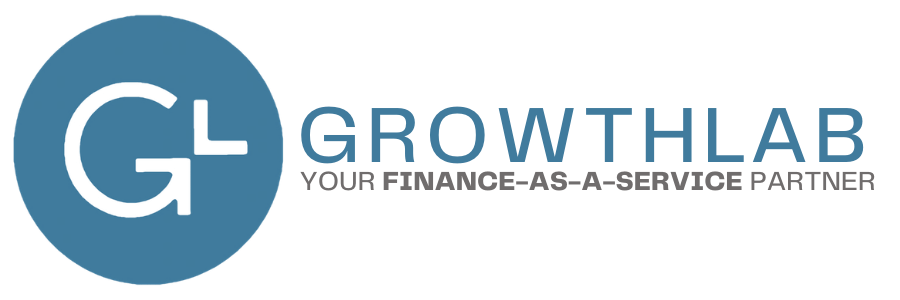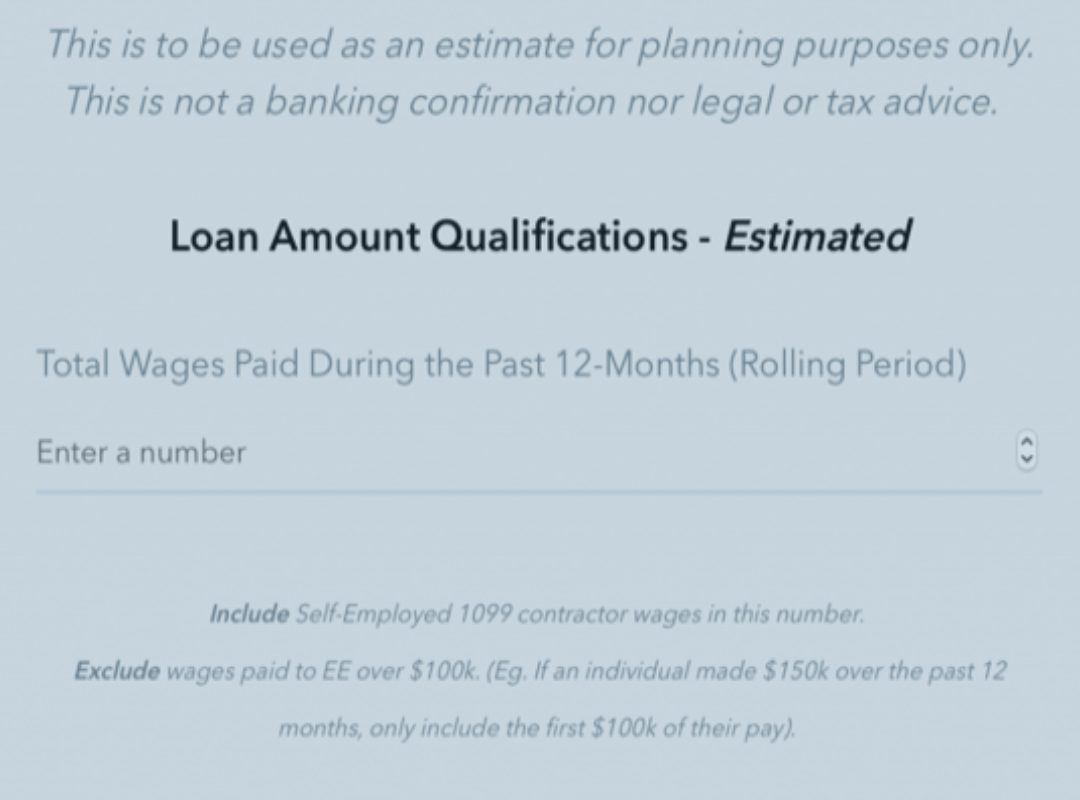The Steps to Completing your SBA PPP Loan Forgiveness Application
How do I complete the SBA Paycheck Protection Program (“PPP”) Loan Forgiveness Application? Our 5 Steps to completing your SBA PPP Loan Forgiveness Application is not easy lifting, but will help you get there!
So now that the dust is settling on the Paycheck Protection Program and the PPP Flex Act, you can actually begin calculating your forgiveness with a higher degree of certainty that the rules will not materially change again. The rules may change slightly, but we do not anticipate material changes.
So, what do you need to do to start thinking about completing your Paycheck Protection Program Loan Forgiveness Application for submission to your lending institution? Although this is not a very simple process, GrowthLab Financial Services, Inc. has been at the forefront of giving small businesses the strategic guidance and informational needs to apply for the PPP Loan, receive the PPP funds, and, now, applying for the forgiveness of the PPP Loan.
Paycheck Protection Program Calculator for DIY
At the start of all of this, we even have a dedicated website at www.growthlabfinancial.com/loan-forgiveness with current & relevant tools for small businesses to navigate the PPP process.
What you will now find at www.growthlabfinancial.com/loan-forgiveness is a free and easy-to-navigate DIY PPP Forgiveness Application Calculator. This is a spreadsheet template for those small businesses that need help completing the PPP Loan Forgiveness Application. In addition to the spreadsheet template, we have created a video that will help you walk through the PPP forgiveness calculation process and our Calculator. The Calculator is designed to capture your relevant info as well as create the PPP Schedule A and associated worksheets which are foundational documents for your Forgiveness Application. With the Calculator, you input your data and the Calculator spits out the needed schedules.
Certain companies will be able to utilize the simplified application (SBA Form 3508EZ). If you can use Form 3508EZ, you can skip over step 2 and 3, below. If not, you must apply for forgiveness of your PPP loan using SBA Form 3508.
In any case, GrowthLab is your Finance-as-a-Service (FaaS) partner, and we have distilled the process of applying for your forgiveness into these five steps.
Download the Forgiveness Application
Here are the 5 Steps to helping small businesses completing SBA PPP Loan Forgiveness Application:
Step 1: Gather Payroll Data and Determine Your Covered Period
No surprises here. Start with your payroll data and select your Covered Period. Those two are the basis for your forgiveness. Whether you planned meticulously for the original 8-week Covered Period or not, the rules are now expanded (changed) and you have the option to extend for another 16 weeks!
If your loan was disbursed before June 5, 2020, which will be the majority of loans, you can choose to use the original 8-week Covered Period or the extended Covered Period which is 24 weeks. Our recommendation is this: at the end of week eight, calculate what your PPP Forgiveness Amount would be by going through these five steps. Save the result. Then, do another analysis by projecting what the next 16 weeks look like for your business. Compare the 8- and 24-week outcomes. If your 8-week scenario gets you sufficient or better forgiveness, you move forward with 8 weeks as your Covered Period (or shift it by several days based on the “Alternative Payroll Covered Period” definition). If not, hold off on the application and submit with more favorable 24-week numbers.
As for what payroll data you need to complete the PPP Loan Forgiveness Application, you need, at a minimum, pay data by week, by employee for your Covered Period. Your payroll provider is likely to have PPP Payroll Reports that you could use. ADP, Paychex, and Gusto each have such reports. However, the data may be summarized and may be skewed by one-off payments made to employees such as prior-year bonuses. We recommend that you own your data for this application rather than relying solely on the template reports. Pull their reports and use the data, but ensure you have complete data so you can answer any questions the lender or SBA may have. We recommend gathering pay by week, by employee for your Covered Period and entering into our calculator (use the Wage Schedule & Calc sheet) which is available for free at www.growthlabfinancial.com/loan-forgiveness.
Step 2: Calculate Reductions to Forgiveness
For those companies that did not specifically plan for PPP funds prior to receiving the PPP Loan funds, the reduction could be eye opening. The reduction to the total forgiveness is going to, essentially, determine how much of the PPP funds end up turning into a 2- or 5-year term loan. The PPP Flex Act gives companies an opportunity to lessen the forgiveness reduction by leveraging a Safe Harbor calculation.
Your total forgiveness may be reduced if you cut anyone’s pay by more than 25% or if you reduced your total FTEs during the Covered Period, as compared to the Reference Periods for wage and Reference Period for FTEs (which are different for each).
The Reference Period for wages is Q1 2020. In our Calculator, take a look at row 44 and 92 of the Wage Schedule & Calc sheet to determine if you have a potential reduction and should move to the Safe Harbor calculation.
The Reference Period for FTEs is either:
- February 15th, 2019 – June 30th, 2019
- January 1st 2020 – February 29th, 2020.
For the FTE Reference Period, use whichever yields the lower FTE count.
If you cut pay by more than 25% or reduced your FTEs compared to the Reference Periods, you may have a reduction in your PPP Loan forgiveness. However, the PPP Flex Act provided a Safe Harbor calculation — a way for you to increase wages and/or FTEs back to the Reference Period levels within certain time frames without getting “dinged” on your forgiveness amount.
If this is the case for you, you’ve hit the need for the Safe Harbor calculation, check out step #3 to calculate if you have the ability to maintain higher forgiveness via the Safe Harbor calculation for wages and FTEs.
Step 3: Leverage the Safe Harbor Calculation, if Needed
The Safe Harbor calculation provides a secondary path to increasing your PPP Loan forgiveness potential. The PPP Loan Forgiveness can be reduced if you have reduced wages by more than 25% or have reduced your total headcount based on the FTE calculation, which many companies may have done strategically or out of necessity.
The Safe Harbor for wages and FTEs is done separately and both will require more information for numerous time periods. For the wage Safe Harbor calculation, you will need to document annualized salary or hourly wage by employee for three payroll periods, as follows:
- Payroll period including Feb 15, 2020
- Average of Payroll periods from Feb 15 – Apr 26, 2020
- Payroll period including Dec 31, 2020 (or earlier, if FTEs return to Reference Period levels prior to Dec 31, 2020).
In our calculator, these numbers are simply aligned below the already-documented weekly payroll data on an employee-by-employee basis for the Covered Period.
The Safe Harbor for FTE reduction requires FTEs to be calculated for the same three periods using the same calculation methodology as for the Covered Period. You can choose to calculate FTEs as a straight calculation of hours worked per week divided by forty hours or by simply bucketing anyone with under 40 hours as a 0.5 FTE
Step 4: Identify non-cash compensation and non-payroll expenses
Any amounts paid by the company for health insurance and employer contributions to retirement plans need to be documented and included. In addition, any state and local taxes assessed on employee compensation can potentially be included.
Also, non-payroll expenses can be included, but cannot be more than 40% of the forgiveness amount. Don’t worry about the 40% trigger here, just document all your relevant expenses. The application deals with this tigger later in the process. Your non-payroll expenses include rent or lease payments, interest on mortgage payments, and utility payments during the Covered Period.
Step 5: Bring it all Together to Document your Forgiveness Amount
Now that you generated a lot of the data, hold on to your bootstraps. If you’ve used our Calculator to complete Steps 1-4, you’ve done a lot of the heavy lifting already because our Calculator spits out PPP Schedule A Worksheet and PPP Schedule A of the Paycheck Protection Program Loan Forgiveness Application.
These two schedules are the foundation of your application. All the complicated math to derive these schedules must be documented on an employee-by-employee basis with supporting documents to submit to your lending institution. If you need to use the full SBA Form 3508 and have not built the PPP Schedule A and the corresponding Worksheet, you MUST go back and start over.
So, let’s give this a try, but be ready to give it the time that it needs to do it correctly or engage a service firm like GrowthLab to assist you. Let’s start at the top of the Forgiveness Amount Calculation. It all starts with wages.
Total Payroll Costs (Line 1 of Forgiveness Amount Calculation) include:
- Cash Compensation from Box 1 of PPP Schedule A Worksheet, Table 1. Table 1 includes:
- Employees whose annualized 2019 compensation was equal to or less than $100k
- Employees who were not employed during 2019, but are employed during Covered Period
- Cash Compensation from Box 4 of PPP Schedule A Worksheet, Table 2. Table 2 includes:
- Employees whose annualized 2019 compensation was more than $100k
- Non-cash compensation (Line 6, 7, and 8 of PPP Schedule A)
- Total employee health insurance
- Employer contributions to retirement plans
- State and local taxes assessed on employee compensation
- Lastly, Compensation to Owners (Line 9 of PPP Schedule A)
Now we move to non-payroll costs (lines 2, 3, and 4 of Forgiveness Amount Calculation)
- Business Mortgage Interest Payments
- Business Rent or Lease Payments
- Business Utility payments
The next inputs you need are going to be those which will adjust your forgiveness amounts based on wage and FTE reductions (which we discussed in Steps 2 and 3, above).
- First, line 5 of the Forgiveness Amount Calculation comes from PPP Schedule A, Line 3, which itself is derived from Box 3 of the PPP Schedule A Worksheet, Table 1. Essentially, if you reduce your wages by more than 75%, this will impact your total forgivable amount.
- Second, Line 7 of the Forgiveness Amount Calculation comes from PPP Schedule A, Line 13, which
The bottom line of the Forgiveness Amount Calculation — your forgiveness amount — is the lowest of:
- Forgiveness Amount modified by your wage and FTE reductions
- PPP Loan Amount (obviously, can’t be higher than what you received!)
- Payroll Costs divided by 60%
Once you get there, you’ve done your work. Just make sure you can back up each line item with (a) a calculation and (b) documentation. Send it to the bank and get forgiven!
Now you just need to focus on tax planning since your net profit is going to be directly impacted on an 1:1 basis by every forgiven dollar of PPP funds! For more on that, check out our Weekly Jump video here.
Looking for more information on the Paycheck Protection Program? Check out some more of our resources below!

GrowthLab, a Finance-as-a-Service (FaaS) company serving founders and management teams with full-service Financial Planning & Analysis, Monthly Accounting, Virtual CFO, HR-People Advisory, and Business Tax.


